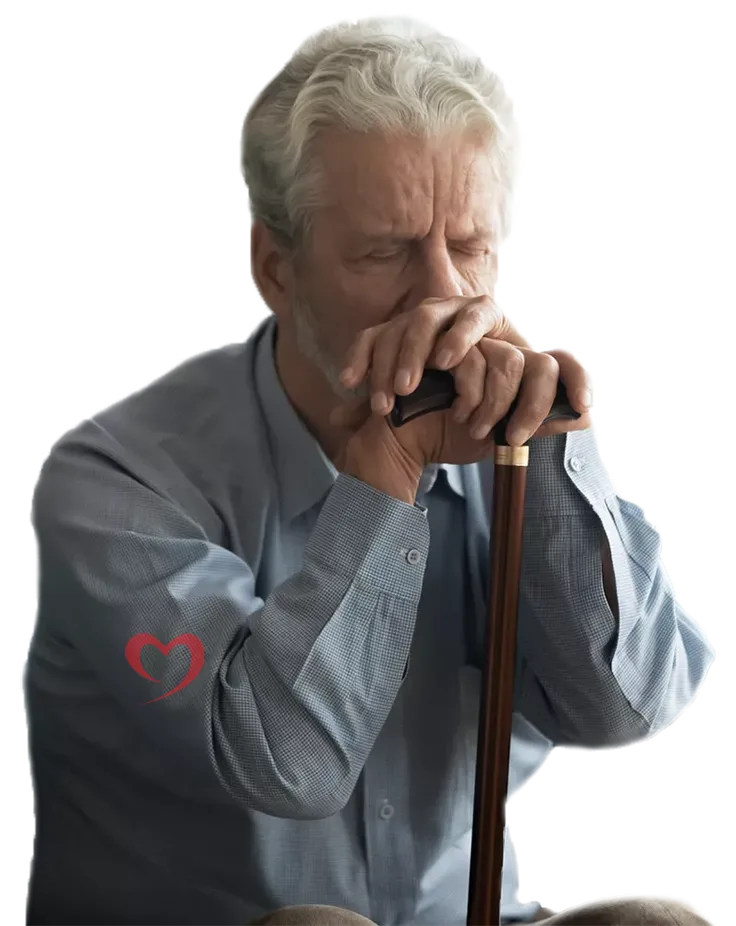Parkinson’s disease usually occurs between the ages of 50 and 65, and affects about 1% of people in this age group; It is slightly more common in men than women. Parkinson has variety of treatments. For those who seek Parkinson treatment with low cost and good quality, Iran will be a perfect destination. in the following, we will deal with the Parkinson’s treatment in Iran.





There is no 100% cure for Parkinson’s disease, but there are many ways to slow down the disease with the help of depleted brain cells and reduce the symptoms in the patient. Treatments available include the following: In the following, we will briefly explain each of these non-surgical methods.
Exercise and physiotherapy
Acupuncture
TMS
Deep brain stimulation
medicines
In terms of the price of health services, Healtha aims to offer the most competitive prices with other countries so that the price of Healtha services is much lower than the price of similar services around the world.
In this section, you can watch videos related to your treatment.
These videos are just a small part of a big change in Healtha.
Our patients’ experience of Healtha treatment
Although research is ongoing, to date there is no known cure or way to prevent Parkinson’s disease. Still, research in Parkinson’s disease has made remarkable progress. There is very real hope that the causes, whether genetic or environmental, will be identified and the precise effects of these causes on brain function will be understood. These remarkable achievements give real hope for the future.
Even though there is no cure for Parkinson’s disease, by identifying individual symptoms and determining a proper course of treatment, most people with the disease can live enjoyable, fulfilling lives.
To date, there is no known way to prevent Parkinson’s disease. But, there are several treatment options, including drug therapy and/or surgery that can reduce the symptoms, and make living with the disease easier.
Deep brain stimulation works for people with Parkinson’s disease who have responded to levodopa but now have developed dyskinesias or other off symptoms like a return of tremors, rigidity and slowness of movement. DBS doesn’t seem to help people with a typical Parkinson’s syndromes that also don’t seem to improve with Parkinson’s medsicines.
Although Parkinson’s disease is more common in older people, it can sometimes affect younger adults as well. Parkinson symptoms are caused by the gradual destruction of nerve cells in the part of the midbrain that control body movements. Usually the first signs of the disease, which are difficult to detect, are a feeling of weakness or dryness in one arm or leg, or a slight tremor in one arm while immobile. Eventually, the tremor intensifies and expands, the muscles become drier, the movements become slower, and the balance and coordination gradually disappear. They usually present with the progression of the disease, depression, cognitive problems and other psychological or emotional problems.
Parkinson’s disease usually occurs between the ages of 50 and 65, and affects about 1% of people in this age group; It is slightly more common in men than women.
Parkinson’s disease occurs in different forms in people and causes different symptoms. Parkinson’s symptoms are severe or mild, or recurrent or occasional, but it has five phases. The duration of each phase is different and sometimes patients do not experience some phases, for example, they go directly from the first phase to the third phase.
Phase One: During this phase of the disease, a person usually experiences mild symptoms such as tremors in one arm or leg. At this phase, family and friends can generally recognize Parkinson’s changes such as posture, imbalance, and abnormal facial expressions.
Phase Two: In the second phase, the person’s symptoms are bilateral and involve the arms and legs on each side of the body. Usually, a person has difficulty walking or maintaining balance, and his or her inability to perform physical tasks becomes more apparent.
Phase 3: The symptoms of Parkinson’s disease in phase III are relatively severe and include the inability to walk or stand normally. In phase three, the person’s movements are significantly slowed down.
Phase 4: At this phase, Parkinson’s symptoms worsen. The person may still be able to walk, but most of this walking is limited, and muscle dryness and Bradykinesia (slowness of movement) are often seen in the patient. During this phase, most patients are unable to do their daily chores and usually cannot live without the help of others. At this phase, however, the vibrations of the previous phases are reduced or eliminated for unknown reasons.
Phase Five: In phase five, the patient is usually unable to take care of himself or herself and is unable to walk or stand. Generally, patients in phase five need a full-time nurse.
The body’s movements are regulated by a part of the brain called the basal ganglia, whose cells need balanced amounts of two substances called dopamine and acetylcholine, both of which are involved in transmitting nerve impulses. In people with Parkinson’s, dopamine-producing cells are gradually destroyed, which upsets the balance of these two neurotransmitters. Researchers believe that in some cases, genetics play a role in this cell destruction. In rare cases, Parkinson’s disease can be caused by a viral infection or exposure to environmental toxins such as insecticides, carbon monoxide or metallic manganese. But in most cases, the cause of Parkinson’s disease is unknown.
Parkinson’s is a form of Parkinsonism. Parkinsonism is a general term used to refer to symptoms that are commonly associated with Parkinson’s disease but are sometimes caused by other causes.
It is important to distinguish between the two terms because some of these other causes are treatable, but others do not respond to treatment or medication. Other causes of Parkinson’s include:
Reaction to prescribed drugs
Unauthorized drug use
Exposure to environmental toxins
stroke
Thyroid and parathyroid disorders
Recurrent head trauma (for example, boxing trauma and multiple concussions)
Brain Tumor
Abnormal increase in fluid around the brain (called hydrocephalus)
Inflammation of the brain (encephalitis) caused by infection
Read Also
Parkinson’s is a progressive movement disorder. Some people feel weak at the beginning of the disease, have difficulty walking, and their muscles become rigid. Others experience tremors in the head or hands. Parkinson’s is a progressive disorder and its symptoms gradually get worse. Parkinson’s symptoms include:
Slowing down voluntary movements, especially movements such as walking or rolling in bed.
Decreased ability to facial expressions, smooth speech and reduced blinking
Shuffling gait and difficulty in moving the arms back and forth when walking and bending the spine
The lack of balance; Difficulty getting up from a sitting position
Continuous movement of the thumbs and pill-rolling tremor
Swallowing problem in more advanced phases
Dizziness or fainting while standing (postural hypertension)
There is no 100% cure for Parkinson’s disease, but there are many ways to slow down the disease with the help of depleted brain cells and reduce the symptoms in the patient. Treatments available include the following: In the following, we will briefly explain each of these non-surgical methods.
Exercise and physiotherapy
Acupuncture
TMS
Deep brain stimulation
medicines
Read Also
Exercise is vital to maintaining a level of performance. Physiotherapy helps to improve mobility, range of motion and flexibility of the patient’s muscles. Physiotherapy can not prevent Parkinson’s disease from progressing, but it can help the patient cope and feel better. Physiotherapists can help reduce muscle stiffness and joint pain through exercise. An experienced physiotherapist can help improve the patient’s balance and gait.
Using a treadmill, doing resistance exercises and stretching exercises is very beneficial for patients with Parkinson’s. Hard and fast pedaling can be useful for Parkinson’s patients.
TMS Deep Therapy, or deep brain magnetic stimulation, is an effective, safe, and non-invasive way to treat Parkinson’s disease. In deep TMS therapy, the structures of the brain and the networks associated with Parkinson’s disease are stimulated using magnets and a significant improvement in the patient’s condition is achieved. This treatment is an outpatient procedure that, in addition to not requiring anesthesia or hospitalization, is well tolerated and has no systemic side effects.
It is a surgery that is used for several cases of debilitating neurological symptoms, such as tumors, muscle stiffness, dryness, slowness of movement, and difficulty walking.
In this method, an electrode is placed deep in the brain, where movement is controlled. A device similar to a pacemaker (nerve stimulator), which controls the amount of stimulation induced by the electrode, is placed under the skin of the upper chest. The device wire is passed under the skin and connects the nerve stimulator to the electrode.
Electrical impulses transmitted from the nerve stimulus are transmitted to the brain via a wire and then an electrode. They interfere with and block the electrical signals that cause the symptoms of the disease.
Deep brain stimulation is commonly used for patients who are in advanced phases of the disease and do not respond well to medication.
Drugs available to treat Parkinson’s disease
Most people with Parkinson’s can be treated with some prescription drugs. The most commonly prescribed medications for this disease are:
Artan
Azilekt
Cagentin (benzotropin)
Mirapex
Neopro
Requiem
Cinema
Tasmar
If the patient reacts to the medication, or the medication does not work, the doctor will recommend surgery.
Alternative therapies for Parkinson’s disease
Alternative therapies can also be used to treat Parkinson’s disease. The most important thing that has attracted the most attention in recent years has been the effect of vitamin E in reversing the progression of the disease; Of course, there is still much debate in the medical community about this effect.
The use of relaxation and visualization of guidance is also recommended to help control stress, depression and anxiety caused by this disease. Research has shown that these two techniques help slow the progression of symptoms and accelerate recovery from surgery and injury.
Depending on the patient’s needs, medical history, health status, and symptoms, one of the following procedures may be performed for Parkinson’s disease:
Deep brain stimulation
Pallidotomy
Thalamotomy
Gamma Knife
There are other surgical methods that are under investigation. One of the most promising is the way in which fetal dopamine neurons are transplanted into the brains of people with Parkinson’s disease (tissue transplantation). This is done in the hope that these cells can regenerate damaged dopamine-producing neurons.
There are other methods for treating Parkinson’s disease, such as hydrotherapy or massage, etc.

Parkinson's disease is caused by a loss of nerve cells in the part of the brain called the substantia nigra. Parkinson's treatment in Iran spans from $21054 to $27247.
Product Currency: USD
Product Price: 21054
Product In-Stock: InStock
No. 326, St. Khaje Nasir , St. Shariati Tehran , Iran
info @ healtha.health
+98 910 398 2050
© 2024 Healtha Corporate . All rights reserved.
If you are seeking advice or treatment from Healtha
Please fill in the submission form and send it .
Rest assured that you will be contacted by Healtha at the earliest opportunity without wasting time .